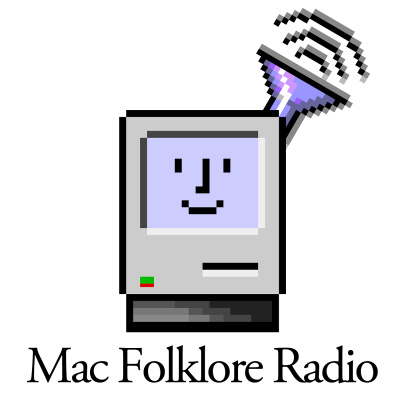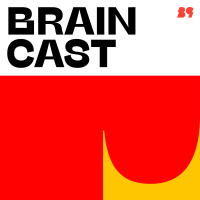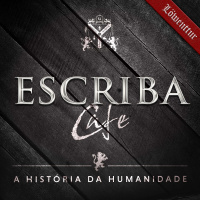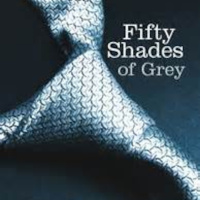Synopsis
The tale of how the Macintosh came to be. Original text courtesy of Andy Hertzfeld et al. at www.folklore.org. Read by Derek Warren.
Episodes
-
Andy Hertzfeld on QuickerDraw (1988)
08/05/2023 Duration: 13minAndy Hertzfeld on the joys of micro-optimization in the earliest days of colour graphics on the Macintosh. Original text by Chester Peterson Jr., MacTutor, June 1988. This Adobe Illustrator ‘88 instructional video gives you a sense of how slow 8-bit colour was back then. Illustrator ‘88 shipped in 1987, well before the advent of QuickerDraw, but I wonder whether drawing was intentionally slowed down for this video to create a more aesthetically pleasing result. How about that cold digital Fairlight CMI-heavy soundtrack? Discogs link for when that YouTube link dies. “Heatseeker” is the library music featured twice in the video. Bookbound interview with Andy Hertzfeld from January 2005, just after the MWSF 2005 keynote and the announcement of Mac OS X 10.4 Tiger, the iPod Shuffle, and the G4 Mac mini.
-
Landon Dyer - Eject, Eject! (1992)
01/05/2023 Duration: 05minLandon Dyer on the joys of subversive sticker placement at Apple’s then new Infinite Loop campus. Original text from dadhacker.com. The button in question, photographed in 2013.
-
Behind Locked Doors - A Tour of Apple's Factory (1990)
02/04/2023 Duration: 27minA tour of Apple’s Fremont and Singapore factories. Remember when we used to manufacture stuff in North America? Written by Cheryl England Spencer, Macworld, September 1990. Cheryl was also the founder of MacAddict. Unfortunately Cheryl passed away in September 2022. :-( We miss you, Cheryl. Obligatory MacAddict attitude clip from Macworld Boston 1996. Watch Cheryl giving us a tour of her office at MacAddict in 1997 in 160x120 Road Pizza (QuickTime 1.0 “Apple Video Codec”) quality. Jean-Louis Gasée assembled a Macintosh IIcx live on stage (eat your heart out, Tim Cook) to demonstrate Apple’s design-for-manufacturing prowess. DRAM joke courtesy of the DRAM crisis of 1989. 1988: NeXT factory tour: The Machine to Build the Machines. I’ll bet Steve even critiqued the unnecessarily epic musical score. 1990: Apple: “We Are Manufacturing”, the Fremont, California factory as it stood when the article was written. Notably less epic than NeXT’s tour and distributed on the User Group Connection VHS tapes. 1987: App
-
They're No Angels (1990)
01/04/2023 Duration: 07minA prison Macintosh Users Group gives as good as it gets at the Massachussetts Corrections Institute, Lancaster Prerelease Facility (1x 5-star review). Written by Deborah Branscum, Conspicuous Consumer, Macworld April 1990. A clue for those who missed the April Fools joke. Music from the Myst soundtrack. Looking for the most detailed lore-rich playthrough of Myst, Riven, etc. ever? dilandau3000 has you covered. Did you know there’s a VR version of Myst now? Yes, climbing up and down ladders is extremely tedious. Scott Forstall is laughing at you for laughing at him re: skeumorphism right now.
-
The Desktop Critic - Mac OS 8 and Why It's Great (1997)
03/03/2023 Duration: 12min“The gang at Apple Computer does its best work when its collective back is against the wall.” Oh 1997 David Pogue, if only you knew. :-( Written by David Pogue, The Desktop Critic, Macworld December 1997. Clip of Apple’s Jim Gable talking about Mac OS 8 “Tempo” from the 1997 OS Strategy VHS tape, feat. cheesy music.
-
The Iconoclast - Is That All There Is? (1992)
03/02/2023 Duration: 19minAfter the System 7 switch, some users are wondering what got into them. Written by Steven Levy, The Iconoclast, Macworld May 1992. Stanford University System 7.0 segment from The Computer Chronicles. Randall Rothenberg (whom I’m sure is reading this 31 years later) should check out System Picker, which eases the confusion of maintaining multiple System Folders by automatically blessing and unblessing them at your command. Watch Macworld Tips & Tricks columnist Lon Poole take you on a tour of System 7 features. Lon wrote Apple help books for the Apple II series all the way through the early days of Mac OS X.
-
folklore.org: Mea Culpa (2004)
07/01/2023 Duration: 10minRevisiting the design decisions and constraints behind the original Macintosh 128. Original text by Andy Hertzfeld at folklore.org. Steven Levy on “unauthorized” modifications to the original Mac: “A Shut and Open Case” (PDF, MP3). Dan Winkler (yes, that Dan Winkler) relaying his experience with a serial port Tecmar MacDrive hard disk in 1984. Dog Cow: “All About MFS: The Macintosh File System”. Dog Cow’s detailed discussion of early Macintosh hard drive systems including the Tecmar MacDrive.
-
Verbatim - Interview with Andy Hertzfeld (1987)
11/12/2022 Duration: 28minIn an interview conducted shortly before the dawn of the Macintosh II, Andy Hertzfeld talks about product design, NeXT, leadership, PostScript, designing products for the broadest possible audience, Windows 1.0, copyrighted code, graphics accelerators, unsung heroes of the Mac team, growing up, and Macintosh Servant. Original text from Macworld, February 1987. Unison World/Print Shop lawsuit (casetext) clip from the 1986 “Second Hand Computers” episode of the Computer Chronicles. Early days of Radius clip from Andy Hertzfeld speaking at the 2004 Mac OS X Conference. Windows 1.0 was allegedly going to do overlapping windows at first. As explained in “Barbarians Led by Bill Gates” (Edstrom and Eller, 1998) the product nearly died in its early years before two guys at a drunken company party unintentionally to transformed it into a 32-bit protected mode OS/2 killer. (The 32-bit part wasn’t accidental, just the OS/2 part.)
-
Landon Dyer - Sorry I Almost Got You Fired (1989)
24/11/2022 Duration: 13minHow the 1989 Loma Prieta earthquake, GNU Emacs, and the Macintosh Programmer’s Workshop converged. Written by Landon Dyer at dadhacker.com in 2009. Gary Davidian quote from of his CHM Oral History (video 1, 2; transcript 1, 2). Some MPW history, some funny MPW error messages, an overview of the famous Projector revision control system, and MPW’s funky About Box animation. I miss About Boxes. :-(
-
Landon Dyer - Flash Memories (1992)
04/11/2022 Duration: 10minOf Newton MessagePad data store resilience and Mars Rover reboot loops. Written by Landon Dyer at dadhacker.com in 2004. Excerpt of Steve Capps (ex-Newton) and Donna Dubinsky, former CEO of Palm and ex-Claris VP, from the Computer History Museum’s Computing In Your Pocket panel discussion.
-
Chris MacAskill - Steve Jobs, AutoCAD, and Focus Groups (1991)
18/10/2022 Duration: 14minIf Unix workstations were cars, what kind of cars would they be? Written by Chris MacAskill at cake.co (defunct, 2021). Watch a bakeoff between Sun’s DevGuide and NeXTSTEP, InterfaceBuilder, and Objective-C. Apple’s 45-minute video pushing Macintosh Quadras to engineers. “Now with a Macintosh user interface, [AutoCAD] Release 11…” … no longer feels like a hastily-ported DOS product! The complete Bill Gates talk from 1989 at the University of Waterloo’s Computer Science Club. John Walker’s fascinating history of Autodesk and AutoCAD: The Autodesk File. Macintosh story and awesome kludge. I can’t believe that worked, and that they shipped it! More Autodesk history. AutoCAD coverage in Macworld: initial announcement (single window-only and no clipboard support!), advert, one user’s opinion, user hostility, and gaining a friendlier user interface before Macintosh support was dropped altogether until 2010.
-
Conspicuous Consumer - Smart Company, Foolish Choices (1992)
20/09/2022 Duration: 21minDeborah Branscum’s Conspicuous Consumer column puts Apple’s active matrix LCD defect apathy under the microscope. At 77dpi in pure black and white–no greyscale, and no RGB subpixels–you definitely noticed dead pixels! Original text from Macworld, July 1992. Dead pixels are nothing new today, but they presented a novel public relations problem in 1991 as active matrix LCDs began to appear in top-of-the-line mass market laptops. Apple, of course, chose to keep completely silent unless asked. This is yet another aspect of ancient computing that goes completely unnoticed by the likes of Wikipedia and thus younger “YouTubers”. Passive matrix LCDs didn’t have this issue, but then again, they didn’t have the fast response time, high contrast, or wide viewing angles of an active matrix LCD either. Macworld January 1993 contains a diagram showing the difference in construction between passive and active matrix LCDs. If Apple considering dead pixels “bad” and voided pixels “acceptable” seems totally arbitrary, tha
-
Review: Envisio Notebook Display Adapter (1992)
01/09/2022 Duration: 10minHello listeners who found me via Michael Tsai! David Pogue reviews a smoking hot new video output product for the PowerBook 100/140/170. And you thought your laptop-and-projector troubles were bad… Very dark photo of an Envisio Notebook Display Adapter in the wild. Macworld reviews the state of LCD projection pads in 1993, from the days before integrated LCD projectors existed.
-
PowerBook 100 Series Introduction (1991)
01/08/2022 Duration: 30minApple’s apology for the gigantic expensive Macintosh Portable. Original text from Macworld, December 1991. Audio clips courtesy of The Unofficial Apple VHS Archive’s collection of Apple User Group Connection tapes, which covered Apple’s PowerBook 1xx launch event for employees in 1991. Got all that? Apple telling you how great the design is. Apple telling you how great the product is. John Sculley telling you how great he is. Useful if you’re having trouble falling asleep. Apple demonstrating the Microsoft Jump Rope and the Microsoft Wart. John Medica: R.I.P., press release and tribute by Wake Forest University, also on YouTube. Computer History Museum - Apple Industrial Design Event (2007) featuring Robert Brunner, Manager of Industrial Design during the PowerBook 1xx era, and Jerry Manock, industrial designer on the Apple II through the Mac 128.
-
Outbound and Gagged (1991)
01/07/2022 Duration: 18minOriginal text from Macworld, February 1991, page 73. Macworld published a correction confirming the Outbound 2000 series was indeed FCC-certified for home use. If you’re just gagging to experience the IsoPoint/TrackBar, you can buy one today from Contour Design! HCI guru Bill Buxton on the IsoPoint. Contour Design on YouTube is all RollerMouse, all the time. Ad for the Outbound 2000-series notebooks, and another where they push the Outbound’s upgradability advantage to PowerBook shoppers. Outbound 2000-series notebook reviews: [Dec 1991, Sep 1992]. MacUser only did capsule reviews of the 2000 series. :-( March 1993 obituary for Outbound. September 1993: PerFit service and upgrades available. Enjoy some gorgeous photos of the original Outbound Laptop System and 2000s from applerooter.net.
-
Review: Outbound Laptop System (1990)
16/06/2022 Duration: 09minFrom the days before the hot-selling PowerBook 100 series, David Pogue reviews a sleeker, less expensive alternative to Apple’s 1989 Macintosh Portable. Original text from Macworld, September 1990. Enjoy some gorgeous photos of the original Outbound Laptop System from applerooter.net.
-
Review: NuTek Duet Macintosh Clone (1994)
20/05/2022 Duration: 15minNuTek’s years of labour finally bear fruit–kind of. The trail of NuTek coverage stops cold after early 1994. We don’t know exactly what happened but this review provides some strong hints. Original text from Macworld, February 1994. The review states you can toggle between the Duet’s Mac and PC modes from the front panel. Nothing is labelled “Mac/PC” in the advertisements. Did they change the silkscreen for production models? Wouldn’t it be funny if they just wired up the turbo button or the keyboard lock switch and left the labels as is to cut costs? Benjamin Chou is still around, helping startups.
-
Send In The Clones (1991)
23/04/2022 Duration: 38minNuTek’s plan for Macintosh World Domination: a clean room implementation of the ROMs and System 6, cheap hardware, and enough investor money to survive the inevitable legal assault from Apple. Macworld speculated a Macintosh clone with a 68030 CPU, colour monitor and hard disk could cost just $600USD at a time when lowly Macintosh LC systems sold for $2700USD. The faster 32-bit data path IIsi sold for $3700 in complete configurations, and the more expandable IIci, $6,000USD and up. Original text from Macworld, April 1991. Advertisements for the NuTek One and Duet. Why use custom chips instead of off-the-shelf parts? IBM PC clone production went into high gear thanks to PC-compatible BIOS vendors like Phoenix and chipset manufacturers like Chips and Technologies. Did you know C&T founder Gordon Campbell went on to co-found 3dfx, the Voodoo company? Savour the varying quality of different IBM PC compatible chipsets. John Warnock gave Apple a good needling in this article, likely because of the ongoin
-
What Comes Together Falls Apart (1985)
16/04/2022 Duration: 06minInfoWorld (13-May-1985) profiles Andy Hertzfeld one year after his departure from Apple. Original text by Kevin Strehlo.
-
folklore.org: PCB Aesthetics/Diagnostic Port (1981)
01/04/2022 Duration: 16minSteve Jobs says of the Mac’s logic board “The lines are too close together!” while Burrell Smith surreptitiously adds some means of expansion. Original text from folklore.org: PC Board Aesthetics, Diagnostic Port. Jef Raskin: Design Considerations for an Anthropophilic Computer Jerry Manock/Jef Raskin/Bill Atkinson “convection enhancement device” quote from “The Macintosh at 20” panel hosted at Macworld Boston 2004. Fiennes on management’s tentative request for iPhone motherboard layout refinement. Pixar on attention to detail: “We sand the undersides of the drawers.” Adrian Black showing the 512k expansion decoder circuit to the left of the 68000. MacGUI’s detailed history of Mac 128K memory upgrades: the Dr. Dobbs article, the early 128k adopter outrage, the high list prices for the Apple 512k upgrade kit. MacGUI’s collection of original Macintosh memory upgrade boards. Steve from Mac84TV tries out a 3DFX Voodoo2 card for the Rev A iMac’s Mezzanine slot.














